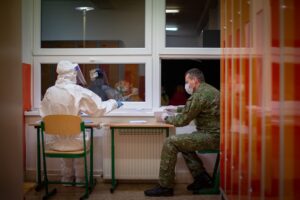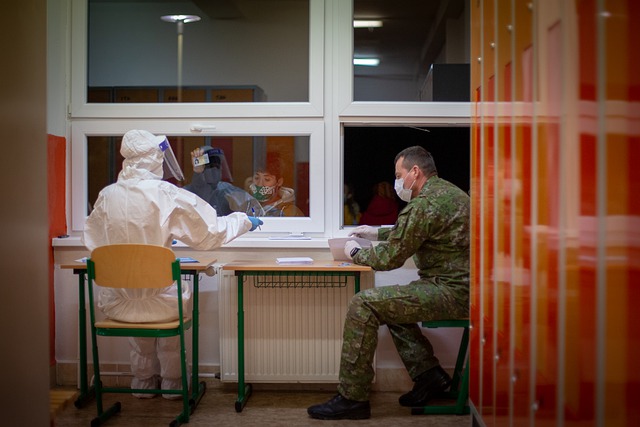Coronavirus divides Canada in half

TORONTO – Canada literally split in half in this fourth wave of the Covid-19 pandemic. On the one hand, Ontario and Quebec where infections seem to gradually slow down, day after day. On the other, Alberta and Saskatchewan where the virus is rampant.
Ontario reported 463 new cases (and 7 more deaths) today – a steep drop from 574 on Tuesday, 610 on Monday, 715 on Sunday and 821 on Saturday. Not only that: today’s case count is the lowest since last August 17, when 348 infections were reported. The seven-day moving average has also continued its steady decline over the past week and now stands at 692, down from 722 a week ago (722). Furthermore, today for the first time since last August 30th, the same average dropped below 700.
Another good news: Ontario laboratories processed more than 39,000 tests today, up from 23,631 on Tuesday and despite the many more swabs, the number of cases detected is still lower. The positivity rate therefore falls to 1.8%, compared to 2.4% on Tuesday and 2.5% a week ago, and it’s the lowest seen since 11 August when it was 1.7%.
The merit is undoubtedly of the vaccines: of today’s cases, 278 concerned unvaccinated people, 21 partially vaccinated individuals, 131 fully vaccinated individuals and 33 with an unknown vaccination status. About 30% of Ontario residents are still not fully vaccinated against the disease, including children under 12 who cannot (for now) have the injection. So far, however, 85% of eligible Ontarians have received at least one dose of one vaccine and 79% have received two.
Turning to the territorial distribution of cases in Ontario, Toronto recorded – today – 93, while 41 were reported in the Peel region, 30 in the York region, 22 in Halton and six in Durham, 54 in Ottawa, 48 in Windsor. Essex and 27 in Hamilton. There are currently 299 patients in Ontario hospitals receiving treatment for the virus and 187 are in intensive care units. Of the latter, 178 are not fully vaccinated or have unknown vaccination status and 9 are fully vaccinated. Another 783 people recovered today and, currently, there are 5,851 active cases throughout the province.
Quebec today reported 683 new cases and 5 deaths (up from 587 new cases and 9 deaths on Tuesday). The number of hospitalizations linked to the pandemic has risen by six to 280: of the new patients, five are in intensive care (where the total is now 91). In the past 24 hours, 10,645 doses of the vaccine have been administered and now 89 percent of Quebec residents 12 years of age and older have received at least one dose while 84.5 percent are considered fully vaccinated.
The situation is completely different in Alberta, which on Tuesday recorded 29 deaths and 1,519 new cases in twenty-four hours, after 4,633 cases reported over the weekend (including Monday). 13,600 tests carried out on Tuesday: the positivity rate was 11.1%.
Hospitalization is also very high in Alberta: there are now 996 people in hospital, of whom 222 in intensive care, one of the higher numbers since the beginning of the pandemic. Useless adds that the hospitals have been collapsing for days now, so much so that the province has formally asked Ottawa to help it manage the emergency: the federal government will be asked to provide assistance for patient transfers to other provinces and for additional staff. And a few days ago the request of the health workers of the province to also have the army and the Red Cross intervene.
The late entry into force of new restrictions (this week) in Alberta has evidently favored the spread of the virus, as well as in Saskatchewan where another 5 deaths were recorded on Tuesday and hospitalization continues to rise: 262 people are hospitalized in the province’s hospitals , 54 of them in intensive care. Nearly three-quarters, or 73.7%, of those hospitalized are not fully vaccinated and four of the patients are children under 11 years of age. 372 new cases of Covid-19 on Tuesday in Saskatchewan, 146 fewer than on Monday but, overall, the infections reported from 15 to 21 September in the province were as many as 3,320 and 19 deaths, one of which in the age group from 20 to 30 years.
Image par lukasmilan de Pixabay



